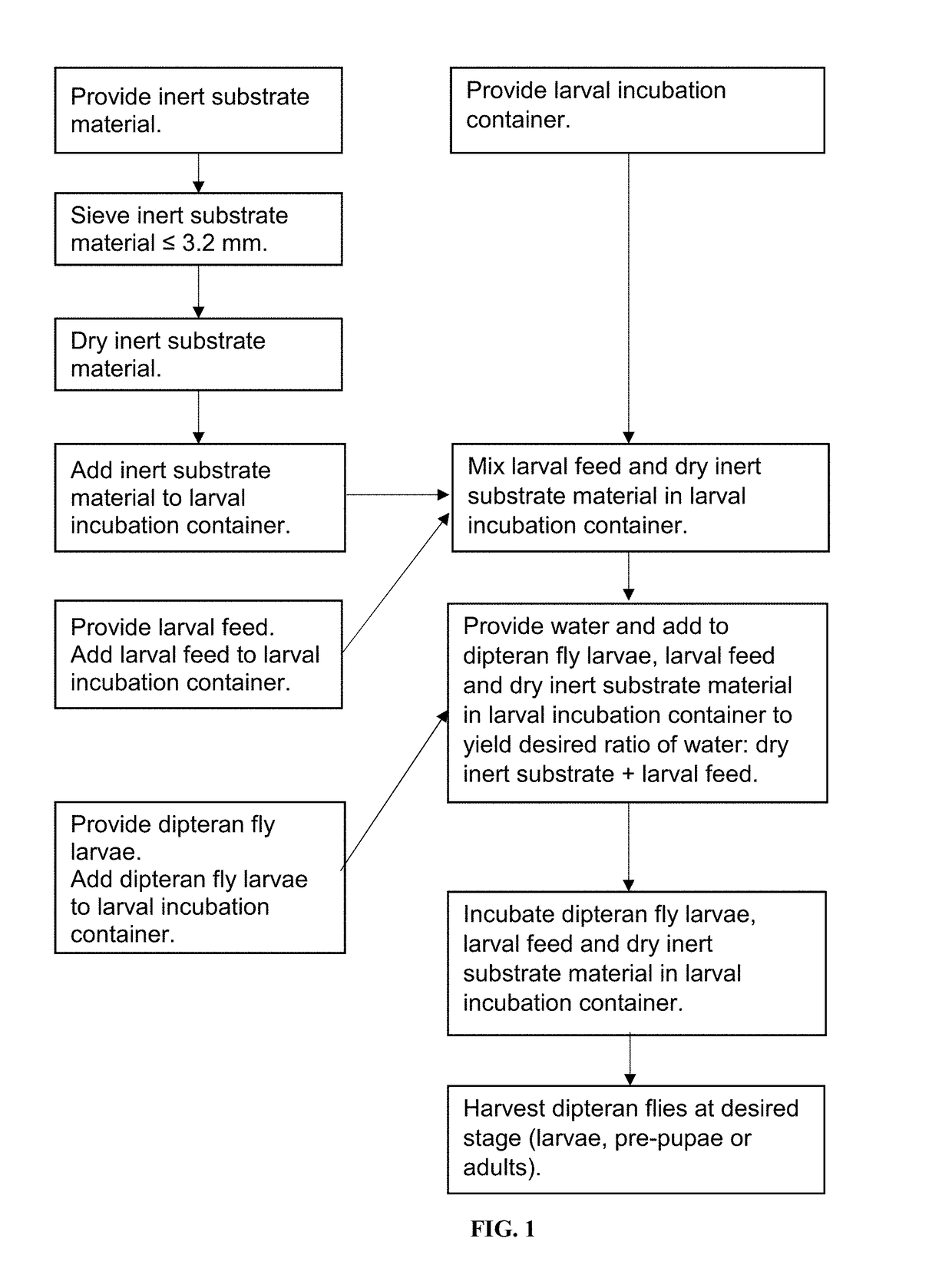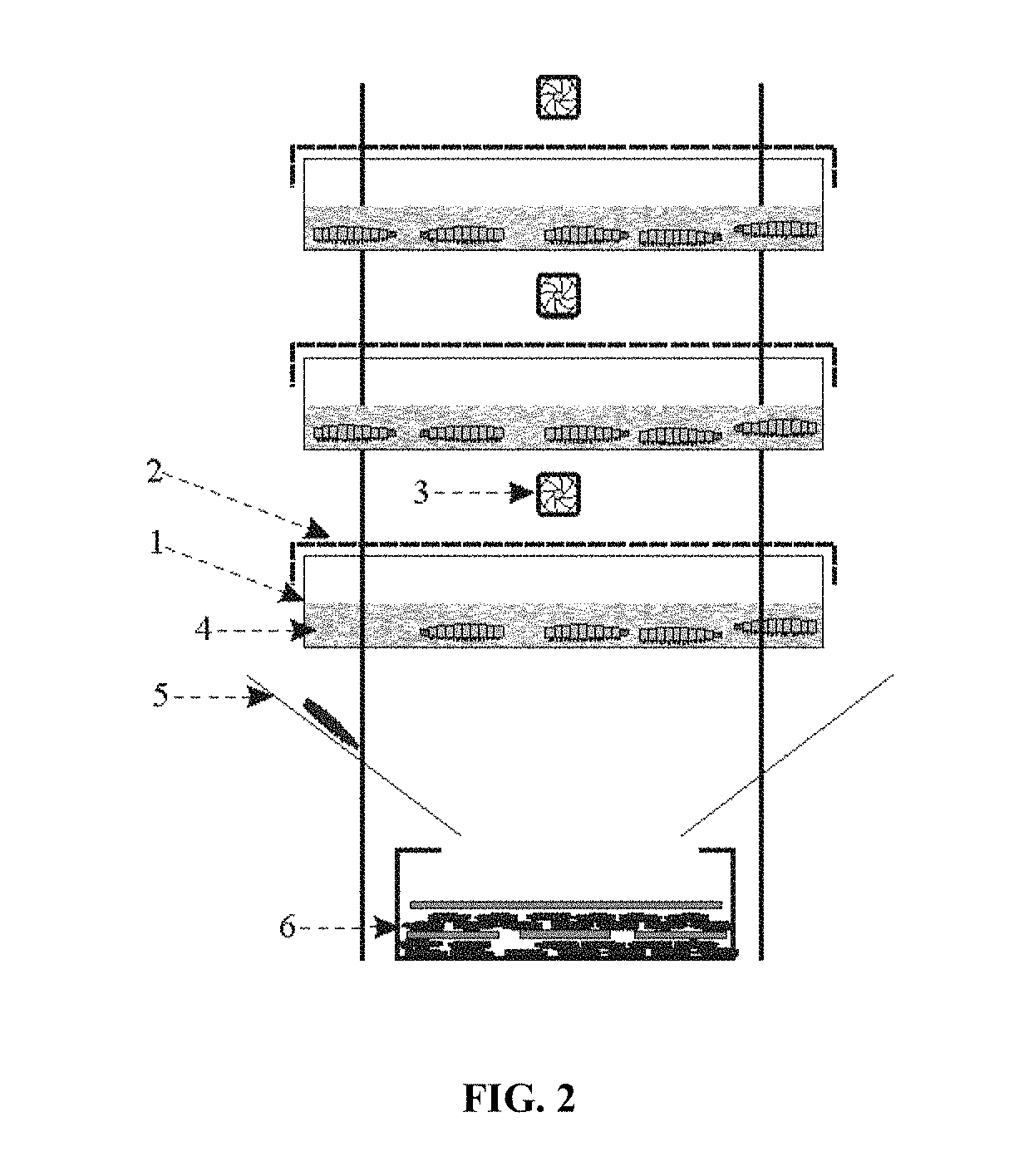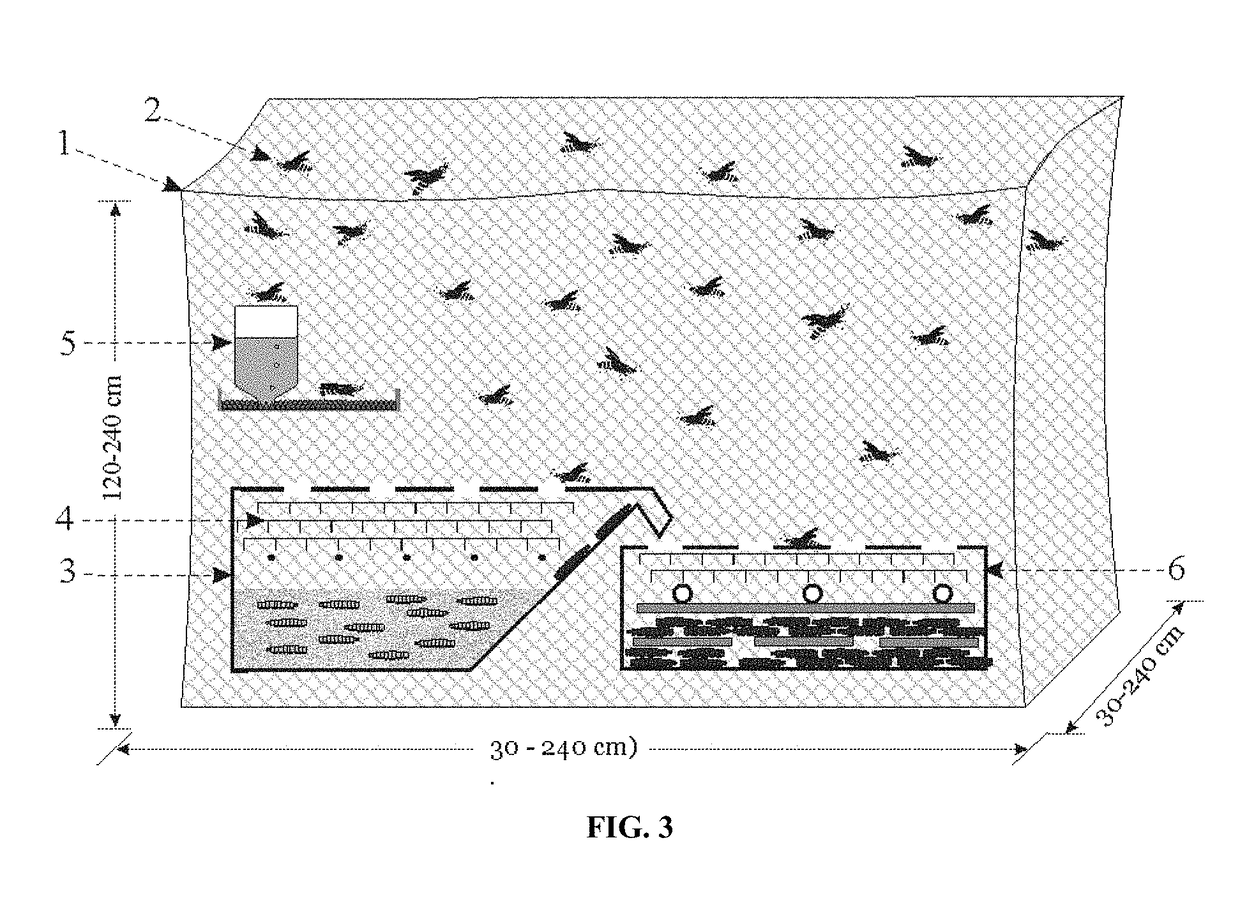System and method for propagating dipteran larvae
a technology of system and method, applied in the field of systems and methods for propagating dipteran larvae, can solve the problems of limiting the supply of vegetal sources of protein, affecting aquaculture and poultry culture, and out-of-water fish meal needs,
- Summary
- Abstract
- Description
- Claims
- Application Information
AI Technical Summary
Benefits of technology
Problems solved by technology
Method used
Image
Examples
Embodiment Construction
[0037]Methods and systems are provided for mass-rearing dipteran larvae black soldier fly larvae (BSFL), to the mature larval stage just prior to the pre-pupal stage.
[0038]The biomass produced by this mass-rearing can be used to produce protein meal used for animal feeds or to produce melanin or melanin-associated proteins.
[0039]In one embodiment, the method for mass-rearing dipteran flies comprises:
providing:[0040]a larval incubation container,[0041]inert substrate material,[0042]a larval feed,[0043]dipteran fly larvae, and[0044]water;
grinding and / or sieving the inert substrate material to obtain particles having largest diameters of ≤3.2 mm;
grinding and / or sieving the larval feed to obtain particles having largest diameters of ≤3.2 mm; drying the inert substrate material;
adding dry inert substrate material to the larval incubation container;
adding the larval feed to the larval incubation container;
mixing the larval feed and the dry inert substrate material in the larval incubation...
PUM
 Login to View More
Login to View More Abstract
Description
Claims
Application Information
 Login to View More
Login to View More - R&D Engineer
- R&D Manager
- IP Professional
- Industry Leading Data Capabilities
- Powerful AI technology
- Patent DNA Extraction
Browse by: Latest US Patents, China's latest patents, Technical Efficacy Thesaurus, Application Domain, Technology Topic, Popular Technical Reports.
© 2024 PatSnap. All rights reserved.Legal|Privacy policy|Modern Slavery Act Transparency Statement|Sitemap|About US| Contact US: help@patsnap.com










